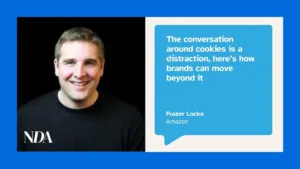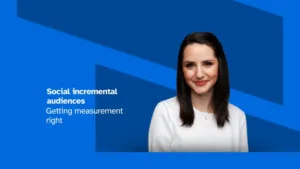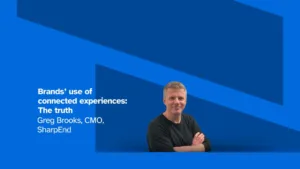By Gediminas Rickevičius, VP Global Partnerships at Oxylabs
In 2024, customers expect to find discounts all over the digital marketplace. Thus, vendors compete to be the ones that put the right offer in front of the right shopper. Leveraging price intelligence acquired via web scraping drastically increases your chance of running with the winners in this race.
However, there is more to strategic discounting than just lowering prices when customer spending slows down. That “more” entails three key dimensions.
Firstly, online vendors can approach price reduction from multiple angles. Aside from straightforwardly reducing the price, you can offer a BOGO deal (buy one, get one for free), a gift, or free shipping.
Secondly, online retailers and platforms use various promotion and presentation techniques. For example, you can automatically apply the discount and inform the shopper about it, focusing either on the percentage or the amount saved. Or, you could ask the customer to enter a previously announced promo code to get the discount. The former method reduces friction and helps convert customers who stumbled upon the webpage. Meanwhile, the latter increases engagement and could be used to attract people to the landing page, for example, via email campaigns.
Finally, different factors can be chosen to trigger the discount. It can come as a loyalty or referral reward, location-based, or an incentive to return to an abandoned cart. Or, it can be a seasonal sale. This latter case is especially interesting because it is tied to external rather than internal conditions, meaning it is not specific to your company. Your main competitors will be fiercely optimizing their discounts at the very same time. And the time is limited. Thus, in this case, you need to be especially strategic with the other two dimensions as well as quick-to-act.
The need for web intelligence
As seasonal sales are related to what competitors are doing more than any other discounting technique, competitor monitoring is crucial here. In e-commerce, this comes down to effectively watching what competitors offer online and how they do it. In other words, what you need is actionable web intelligence.
More precisely, two broad e-commerce strategies can be boosted with web intelligence. One relates to assortment, while the other to promotion.
Assortment should be planned and adjusted according to what the competitors are offering. With web intelligence, you can track their inventory to see what items are already out of stock or will soon be out of stock. Monitoring the pace at which different products sell reveals current catalog trends. Thus, you can adjust to save less popular items for later while promoting what is currently in demand.
Speaking of promotion, your optimal moves also depend on competitors’ actions. Analyzing the way they structure their promotional campaigns and employ dynamic pricing can inform your own discounting and product promotion strategies. Additionally, you will be able to identify the openings for product sales based on how competitors act.
Clearly, effective e-commerce sales depend on the available web intelligence. The trick is how to get it on time.
How web scraping helps
Web scraping is the process of automatically extracting public data from websites using specialized software tools and proxy servers. Among other things, these tools, known as web crawlers and web scrapers, can be used to scrape prices on e-commerce platforms. Additionally, they can extract public information from the websites of competing vendors. In fact, competitive monitoring is one of the main use cases for such automated web data extraction.
Furthermore, considering that social commerce sales are expected to reach $1.698 trillion in 2024, gathering intelligence from social media platforms is also tempting. However companies should be careful to stay within the bounds of what is allowed when acquiring social commerce data.
Keeping these considerations in mind, web data gathering can do a lot for discount optimization. For some time now, consumers have benefited from scraping to find the best deals by using the tools themselves or, more often, turning to price comparison services. Businesses can do the same to find opportunities where they can be the ones offering the most attractive deals.
Specifically, both assortment optimization and effective discounting need real-time data. The analysis of pre-collected data will allow for anticipating supply gaps in the market and preparing initial sales campaigns. However, in the volatile e-commerce environment, continuous monitoring is crucial. Your competitors will keep making moves to benefit from dynamic pricing. Only a steady flow of data can ensure that you are consistently striking a balance between maintaining competitive prices and maximizing profit.
The information you can collect with scraping tools includes quantitative and qualitative data on products and their prices. Additionally, you can track price changes to identify trends or uncover correlations that might suggest what triggers discounts in your competitors’ offerings. This type of web intelligence enables you to keep pace with the market and, often enough, jump ahead with the best deals for the customer.
Finally, effective discounting can be used as a booster for further collection of valuable data. A coupon preferences survey found that 85% of online shoppers would exchange their data for a discount. With the imminent demise of third-party cookies, information knowingly and directly provided by the customer is crucial for data-driven e-commerce strategies. And winter sales are a perfect opportunity to start the cycle of effective discounts and data gathering driving each other.
Summing up: the start/finish line
Every sales period will end with some crossing the finish line victorious, while others will be left with disappointing results. Like many races, however, discounting goes in circles. The start and finish lines are the same, and crossing the latter means the beginning of another lap.
As long as you are in e-commerce, you keep running these laps, trying to finish better with each one. Web intelligence is the difference-maker at every crossing of that line. Automated web data collection allows for improving your discounting practices and sales campaigns. Such improvements generate more web intelligence, which drives even better decisions.
Once in motion, this engine can drive your sales campaigns indefinitely. The goal is to get it going. And as more and more companies turn to automated gathering of alternative data, it will be interesting to see which ones and how will leverage it best to gain that fraction of a second that makes all the difference in racing and discounting.









